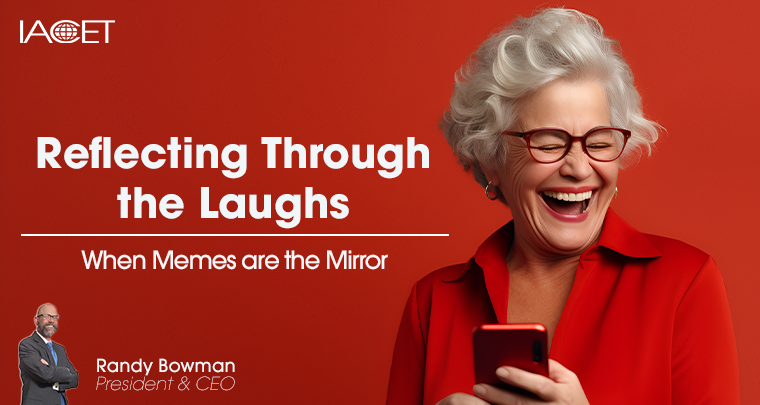Reflecting Through the Laughs: When Memes Are the Mirror

Recently, while doomscrolling on the couch next to me, my wife—a middle school teacher—suddenly burst out laughing. Naturally, I asked what was so funny. She handed me her phone and showed me a meme that read:
"I attended a 3-hour professional development meeting to teach us that a student's attention span is limited, and we should keep lectures down to 20 minutes. I don't think the speaker understood the point."
Without missing a beat, she sighed and said, “It’s so true.”
We both chuckled, but the longer I looked at it, the more I realized this meme wasn’t just a joke. It was feedback—clear, concise, and brutally honest. For those of us in the learning and development (L&D) world, it’s a reminder worth taking seriously. Humor often reflects reality; in this case, it points to a gap between what we say about learning and how we deliver it.
Let’s unpack a few key lessons this meme highlights—and offer reflection points for those designing professional learning experiences.
1. Practice What You Preach
The first and most obvious lesson? Model the learning principles you promote. Don’t deliver a half-day lecture if you're advocating for 20-minute microlearning sessions. Don’t build a one-way monologue if your goal is to emphasize engagement and interaction.
Learners don’t just absorb what you say—they absorb how you say it. When delivery contradicts the message, the result is cynicism, disengagement, and sometimes—viral memes.
Reflection Question:
In your last professional development session, did the structure align with the learning principles you espoused?
2. Respect the Learner's Time and Cognitive Load
Three hours is a big ask in today’s work environment. Attention spans are shorter, demands are higher, and learners expect experiences that respect their limited bandwidth.
That doesn’t mean you can’t deliver longer trainings, but it does mean that longer doesn’t equal better. Break it up. Build in moments of reflection. Include social learning, application opportunities, or even just a break.
Reflection Question:
Are you designing for your content or for your learners’ ability to absorb that content?
3. Design for Transfer, Not Just Delivery
Too often, professional development is designed around content delivery—“we have this knowledge to get across”—rather than what learners will do with the information. A 3-hour lecture may check a box, but it rarely changes behavior.
Instead, focus on transfer of learning: What do learners need to be able to do after this session? What barriers might they face? How can you support follow-up, reflection, or reinforcement?
Reflection Question:
What does success look like a week after your training session ends?
4. Feedback Loops Matter
If people walk away from your professional development sessions and create memes, that’s feedback. It might be snarky, but it’s honest. Creating intentional ways to gather and respond to learner feedback—not just on content but on format, delivery, and perceived usefulness—is essential.
Reflection Question:
How are you listening to your learners—both formally and informally?
Let’s Learn from the Laughter
This meme is funny because it’s true. But it also points us toward a better way. Learning professionals have the tools and knowledge to design transformational experiences—but only if we stay learner-centered, humble, and open to feedback. Even when it’s served with a side of sarcasm.
About the Author

Randy is a seasoned executive leader currently serving as the President and CEO of IACET, a non-profit accrediting body in the continuing education and training sector. With a focus on strategic vision and operational excellence, he effectively leads the organization to achieve its mission and goals.
With over two decades of experience in various leadership roles, Randy has a proven track record of driving organizational success. His expertise lies in aligning technological solutions with strategic objectives, ensuring operational efficiency and sustainable growth.
